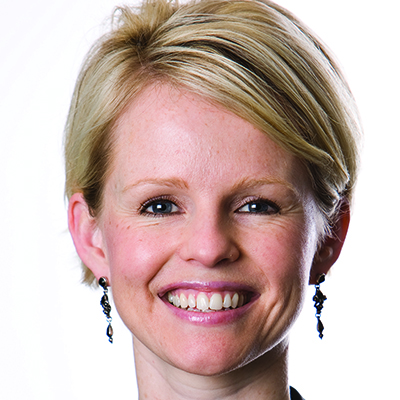SMSFs continue to attract criticism for poor performance stemming from a lack of portfolio diversification. Gemma Dale uses the latest data to assess the real situation.
After a month on the road presenting to thousands of Australian Securities Exchange (ASX) investors and advisers about SMSFs, it is apparent a small but significant few still believe SMSFs are the domain of naïve investors, day traders, loan sharks and property spruikers. A surprising number are also confident SMSF trustees cannot deliver better or equivalent outcomes to Australian Prudential Regulation Authority (APRA)-regulated funds, yet the sector continues to grow. So what does the evidence tell us?
As SMSFs continue to dominate the retirement savings landscape, the subject of SMSF asset allocation and performance remains contentious. This matters for a number of reasons. SMSFs comprise 30 per cent of total superannuation savings, but over half of this is currently in pension phase. SMSFs also comprise more than half the assets in the retirement income stream sector. Ultimately, if an individual has, or is likely to have, sufficient savings to start an income stream in retirement, they are likely to be considering an SMSF. SMSFs are the primary vehicle through which investors meet the sole purpose test, being the maintenance of an income stream in retirement.
Clearly, the assets in which they invest and the returns those assets generate determine the ultimate success of a significant proportion of the retirement system. This significant pool of concessionally taxed assets also regularly attracts the attention of policymakers looking to shore up the federal budget. With so much at stake then do SMSFs generally invest well and produce positive outcomes for their members?
The contention regarding asset allocation and performance arises as many players have different views of the SMSF sector. The ATO publishes quarterly statistics aggregating its data from SMSF fund and tax returns, which provides an excellent overview of the space. Individual players, such as accountants, financial planners, administration services and product and software providers, will have clearer views of subsets of this total population. The ATO’s data clearly indicates SMSFs invest differently to APRA-regulated funds. This should be obvious as SMSF trustees have chosen to manage their own savings and it would be somewhat pointless to merely replicate the asset allocation and investment choices of a professional manager, however, many pundits who note this difference in asset selection consider it a weakness of the SMSF sector and indicative of ignorance on the part of SMSF trustees.

"While headlines will scream that SMSFs are slowly eroding the retirement savings of 1 million Australians, and seminar attendees may echo them, the evidence suggests the sector – on average – remains strong and well managed."
Gemma Dale
How greatly does the average SMSF allocation differ from the average APRA-regulated fund’s allocation? According to the ATO’s latest figures from September 2017, SMSFs hold roughly 25 per cent of their assets in cash and term deposits and 40 per cent in listed Australian securities (primarily shares, but also hybrids, real estate investment trusts and exchange-traded funds (ETF)). Their exposure to international equities is less than 1 per cent when held directly; even estimates of indirect holdings (through ETFs, managed funds and other structures) suggest international equities comprise no more than 7 per cent of total holdings. Direct property, both residential and commercial, comprises about 16 per cent, although this may be understated as much property is held by way of private unit trust arrangements. On the other hand, APRA, via its December 2017 data, estimates large funds hold 23 per cent in domestic equities, 24 per cent in international equities and 11 per cent in cash.
Clearly, the difference between SMSFs and public offer funds is stark: much larger allocations to cash and Australian equities, and much lower allocations to fixed income and international equities. The question is, does this present a problem? And, if so, are SMSF trustees doing anything about it?
The ultimate arbiter of success in investing is whether one’s goals are met. On this basis, it’s important to remember that while the majority of APRA-regulated funds’ assets are held in the accumulation phase, SMSF assets are roughly split 50/50 between accumulation and pension and therefore issues such as liquidity and yield take on much greater significance. That said, portfolio return is generally considered the critical benchmark of success; on this basis, SMSFs can be said to hold their own.
The first three articles that appear when searching “SMSF vs APRA returns” assert SMSFs have outperformed, delivered similar performance and underperformed their larger peers – all research purporting to cover roughly the same time period. The research suggesting SMSF underperformance was conducted by industry super fund economists, while the remaining two pieces (Rice Warner, which suggested outperformance over a 10-year period, and Super Guide, which suggested roughly equivalent performance depending on the time period) were produced by a direct comparison of ATO and APRA data.
Given the evidence for and against outperformance by SMSFs, a few points can be gleaned: SMSFs do not significantly underperform APRA funds over the long term, and may in fact outperform, different time periods will result in different outcomes, and all data sets only reflect the ‘average’ fund, with significant dispersion of results for individual funds. As an individual trustee, your fund return matters much more than that of the hypothetical ‘average’ fund. It’s worth remembering people are generally enthusiastic to grow and protect their own wealth, and averse to risking it unnecessarily, so positive returns should not be particularly surprising.
Generally the evidence points to a large and diverse population of SMSFs whose assets are effectively managed for and by their members. This does not guarantee there are no risks in the SMSF sector or that the sector will continue to perform strongly. The risks associated with limited recourse borrowing arrangements may yet result in many losses.
Many SMSF trustees are alert (if not alarmed) to the fact their portfolios are heavily underweight sectors such as international equities and fixed interest, and are attempting to diversify into these sectors using familiar vehicles. SMSFs are the largest holders of the ASX’s mFunds and account for nearly 40 per cent of turnover in ETFs on nab’s equity trading platform, nabtrade. Class Super estimates SMSFs account for 40 per cent of all ETF holdings in Australia. Their cash holdings provide liquidity, but most trustees will also tell you they are waiting for a great investment opportunity to come along. Nabtrade SMSF investors tend to be most active during periods of high volatility and have a strong contrarian streak, showing greed when others are fearful. No sector of the investment universe is without risk; SMSF trustees appear to be doing their best to reduce these risks over time.
While headlines will scream that SMSFs are slowly eroding the retirement savings of 1 million Australians, and seminar attendees may echo them, the evidence suggests the sector – on average – remains strong and well managed. Given the range of trustees and investment choices they make, this is an extraordinary feat and should be applauded.



